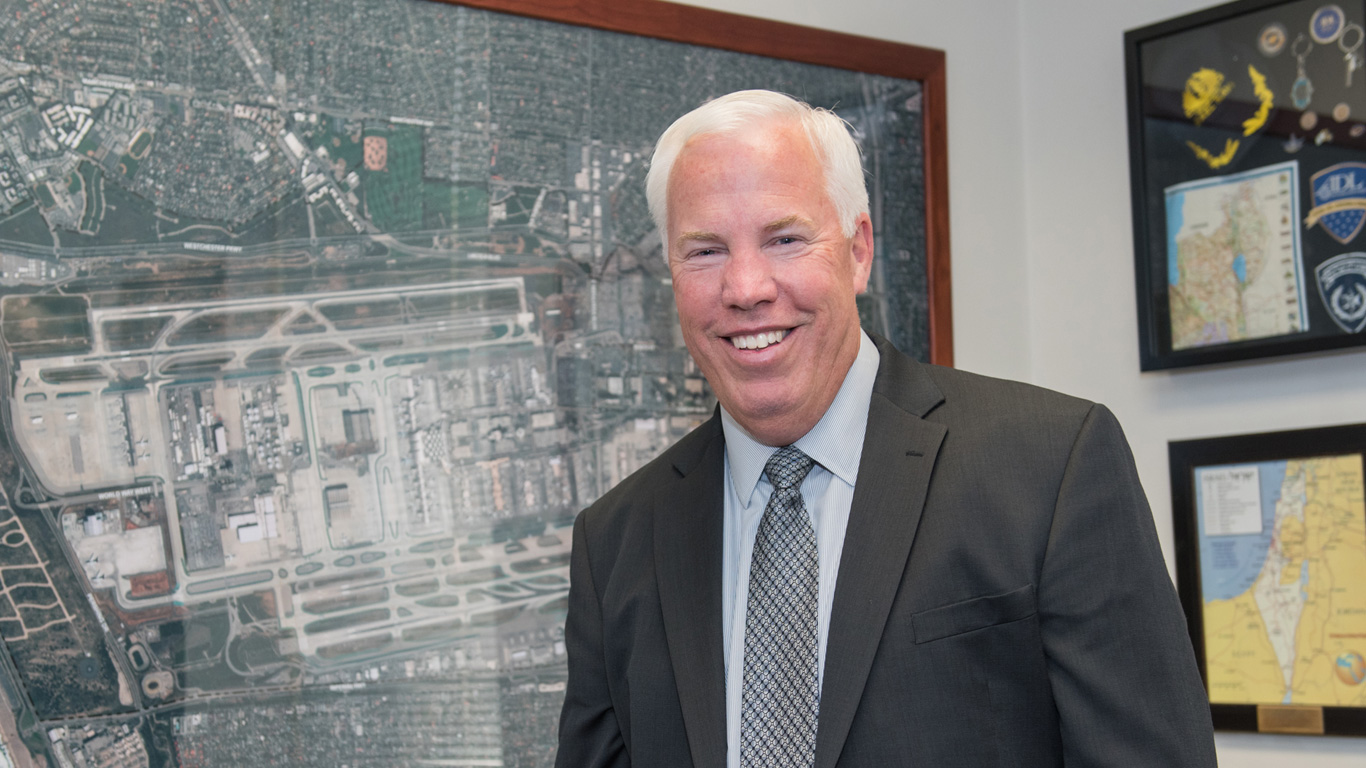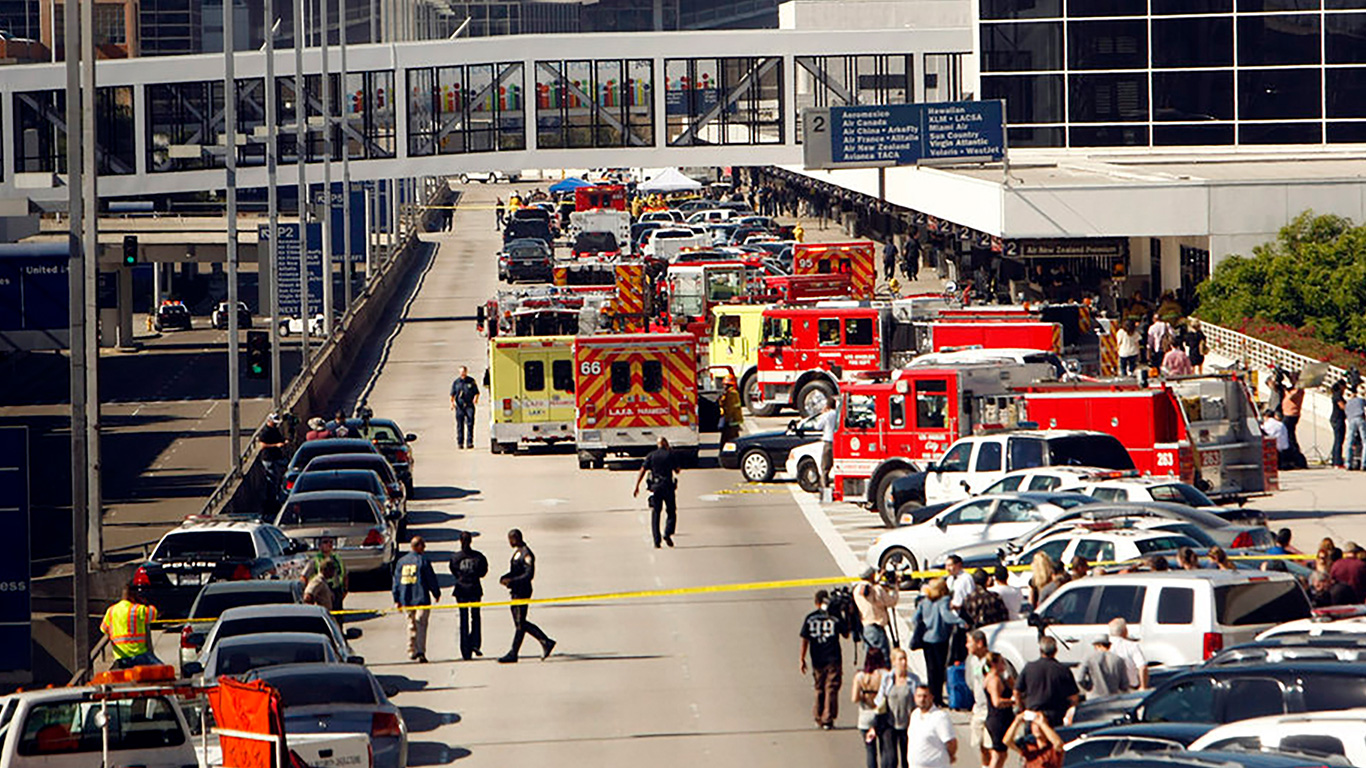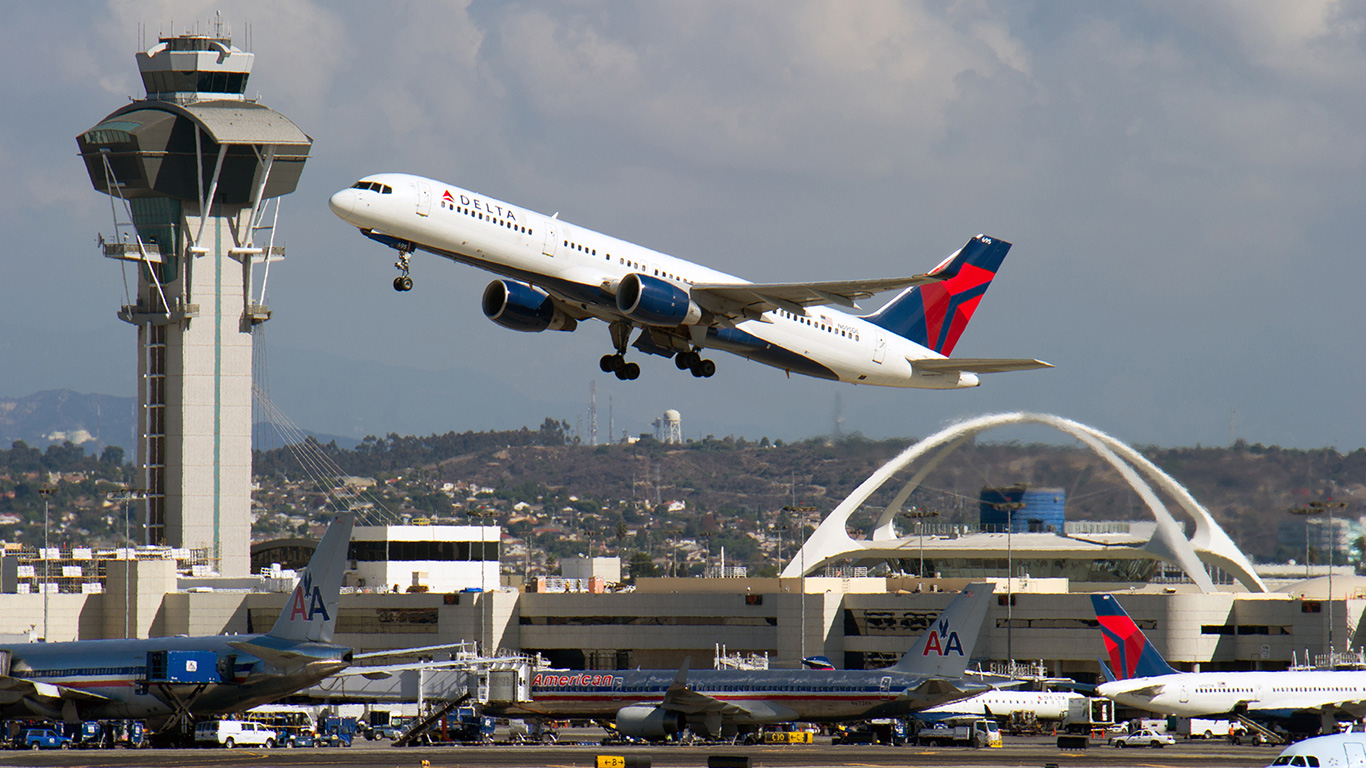

Four minutes and eight seconds. That is how quickly Los Angeles Airport Police Division officers responded and stopped a gunman who had already killed one Transportation Security Administration (TSA) officer from carrying out his plan to kill even more.
A well-choreographed response to the 2013 shooting of a TSA agent at LAX.The November 1, 2013 attack at Los Angeles International Airport (LAX) made international headlines, and in the thick of it was California State University, Dominguez Hills (CSUDH) alumnus Patrick Gannon (’83, B.A., public administration), who at the time had been serving as chief of airport police for just over a year. In August 2016, he was promoted to his current position of deputy executive director of Homeland Security and Law Enforcement for Los Angeles World Airports (LAWA).
“Our response was pretty fast, and pretty remarkable that day. From that case I learned that you’ll never really know how you will react in such an emergency situation until you are actually confronted with one,” said Gannon. “You hope you’ll react well because you have trained and thought about it over and over to stay in the right frame of mind. But I was confident that the men and women who work here had the courage and the professionalism it takes to protect a big asset like this. And I was right.”
To Protect and Serve
Airport security and terrorism prevention efforts around the world were dramatically changed after the terrorist attacks in New York and Washington D.C. in 2001. However, LAX got its wake-up call in 1999 when an Al-Qaeda sympathizer was stopped trying to cross the Canadian border into Seattle with bomb-making equipment, and with the intention of attacking LAX, the world’s seventh largest airport.
“It’s not lost on us that we are an attractive target. Al Qaeda never forgets–just look at the attempts they made on the World Trade Center before 9/11,” said Gannon, who also leads all counter-terrorism efforts for LAWA. “But it doesn’t have to be terrorism. I could be just someone who has something wrong, is bent on destruction, and wants to go someplace that is high profile. Unfortunately, LAX is iconic in that regard, at least in the Los Angeles region.”
Along with its “iconic” regional status,” LAX is the western United States’ top hub for international travel. More than 80 million people pass through the airport’s terminals each year, and protecting them is an immense undertaking for Gannon and the 1,100 officers and employees who serve under him.

In his position Gannon provides leadership, management oversight, and policy direction to all law enforcement and security staff at LAWA’s two airports: LAX and Van Nuys Airport. He also coordinates with other law-enforcement agencies, oversees emergency medical and fire-prevention services provided by the Los Angeles Fire Department, and is responsible for integrating the law enforcement and homeland security functions with Airport Operations and other aviation staff.
Another of Gannon’s major responsibilities is security credentialing the more than 52,000 people who work at LAWA airports, such as baggage handlers, vendors, and construction workers.
“We’re responsible for making sure that everyone who comes to work here should be working here. It’s a critical infrastructure, it is one of our largest operations, and it keeps people safe,” said Gannon. “Someone once described all our work as a ballet. Every piece has to be choreographed perfectly.”
Someone once described all our work as a ballet. Every piece has to be choreographed perfectly. – Patrick Gannon
Two months before joining LAWA, Gannon retired from the Los Angeles Police Department (LAPD) after 34 years of service, of which 12 years were at the executive management level. He was the third in a family of four generations to be LAPD officers. His son Michael Gannon (’08, B.A., public administration) is currently a sergeant in the department.
He was hired by the LAPD at the age of 22 after leaving CSUDH to start work, but returned to the university to finish his bachelor’s degree in public administration after his probation period on the police force had ended. He then went on to earn a master’s degree in public administration from the University of Southern California.
“I’m proud of the fact that I graduated from Cal State Dominguez Hills. It was great for me. It was small at the time. I did struggle a bit along the way, and actually left to find work,” he said. “While there, I met some really great people, some great professors, and I have fond memories of going there. Cal State Dominguez Hills has really stuck with me.”